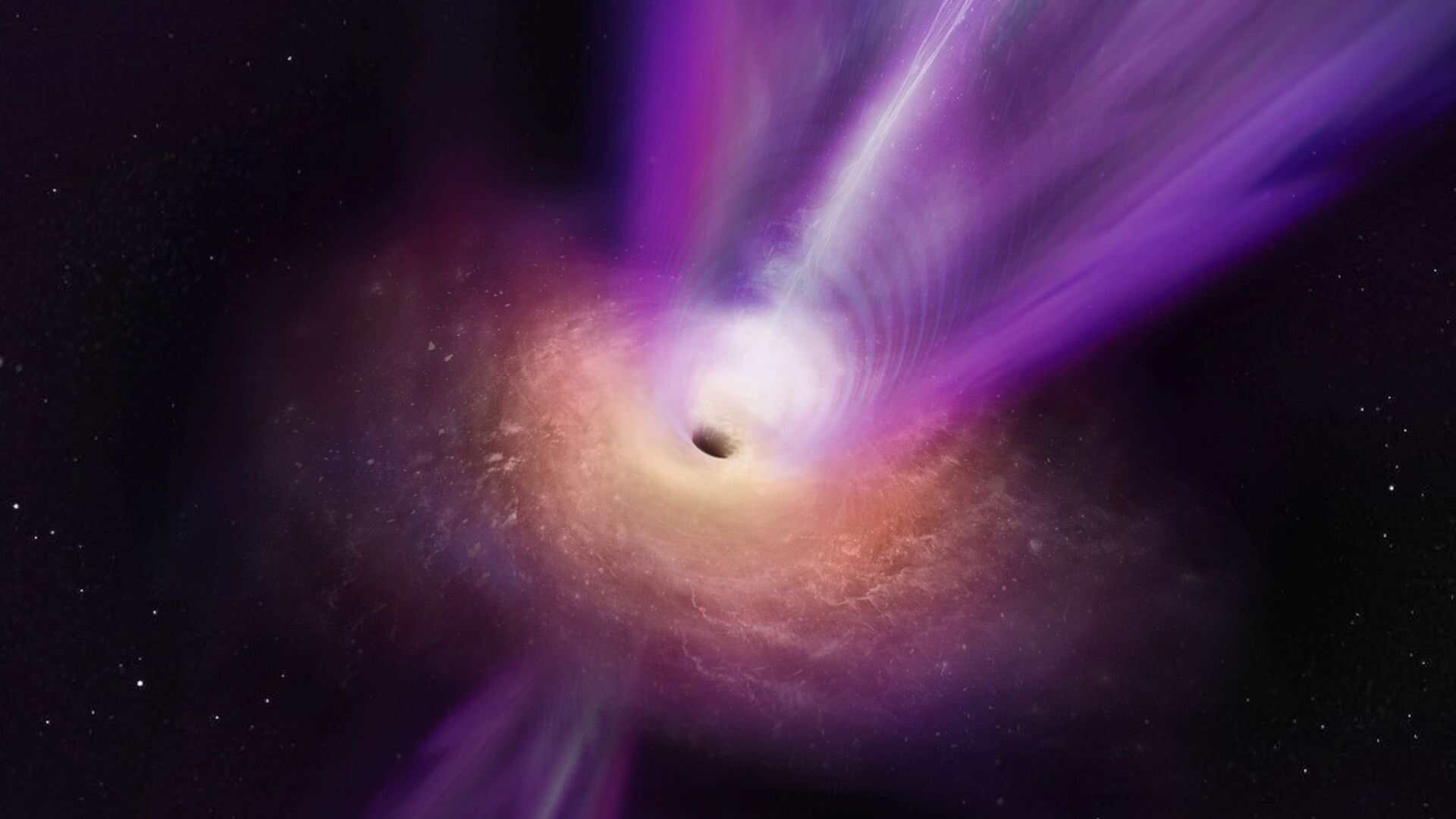Astronomers have detected two colossal beams of energy shooting in opposite directions from a supermassive black hole located in a distant galaxy. These jets, the largest ever recorded, extend approximately 140 times the diameter of the Milky Way. The black hole is situated at the core of a galaxy about 7.5 billion light-years from Earth, providing a glimpse into a time when the universe was less than half its current age.
Details of the Discovery
Using the LOFAR (Low-Frequency Array) radio telescope network based in the Netherlands, researchers observed that these jets, named Porphyrion after a giant from Greek mythology, stretch 23 million light-years from end to end. These super-heated jets consist of high-energy particles, including electrons and positrons, and magnetic fields traveling nearly at the speed of light. Porphyrion’s jets are about 30% longer than the previous record-holder.
Significance of the Findings
According to Caltech astrophysicist Martijn Oei, “Jet systems like Porphyrion appear to be among the most energetic spectacles that have occurred in the universe since the Big Bang.” The study, published in Nature, reveals that such jets are formed when magnetized material falls onto a rotating black hole. These jets must be sustained by a continuous influx of material, approximately one solar mass per year, to grow to such enormous sizes.
Impact on Cosmic Structures
The energy output of these jets is equivalent to that of trillions of stars like the Sun, comparable to the energy released during the most extreme cosmic collisions, such as galaxy cluster mergers. “The fact that it extends so far from its parent black hole means that it may be carrying energy, particles, and magnetic fields into the cosmic web’s voids,” said study co-author Martin Hardcastle of the University of Hertfordshire. This could potentially influence the large-scale structure of the universe and affect star formation and habitable planets.
Implications for Our Galaxy
Currently, the Milky Way’s supermassive black hole does not exhibit such jets. However, this discovery highlights that black holes can influence cosmic structures on a grand scale, extending their influence well beyond their home galaxies. “The key finding is that jets from black holes can, if conditions are right, become as large as the universe’s major cosmic structures,” Oei noted. This suggests that individual black holes can have a significant impact on their surrounding cosmic environment.























